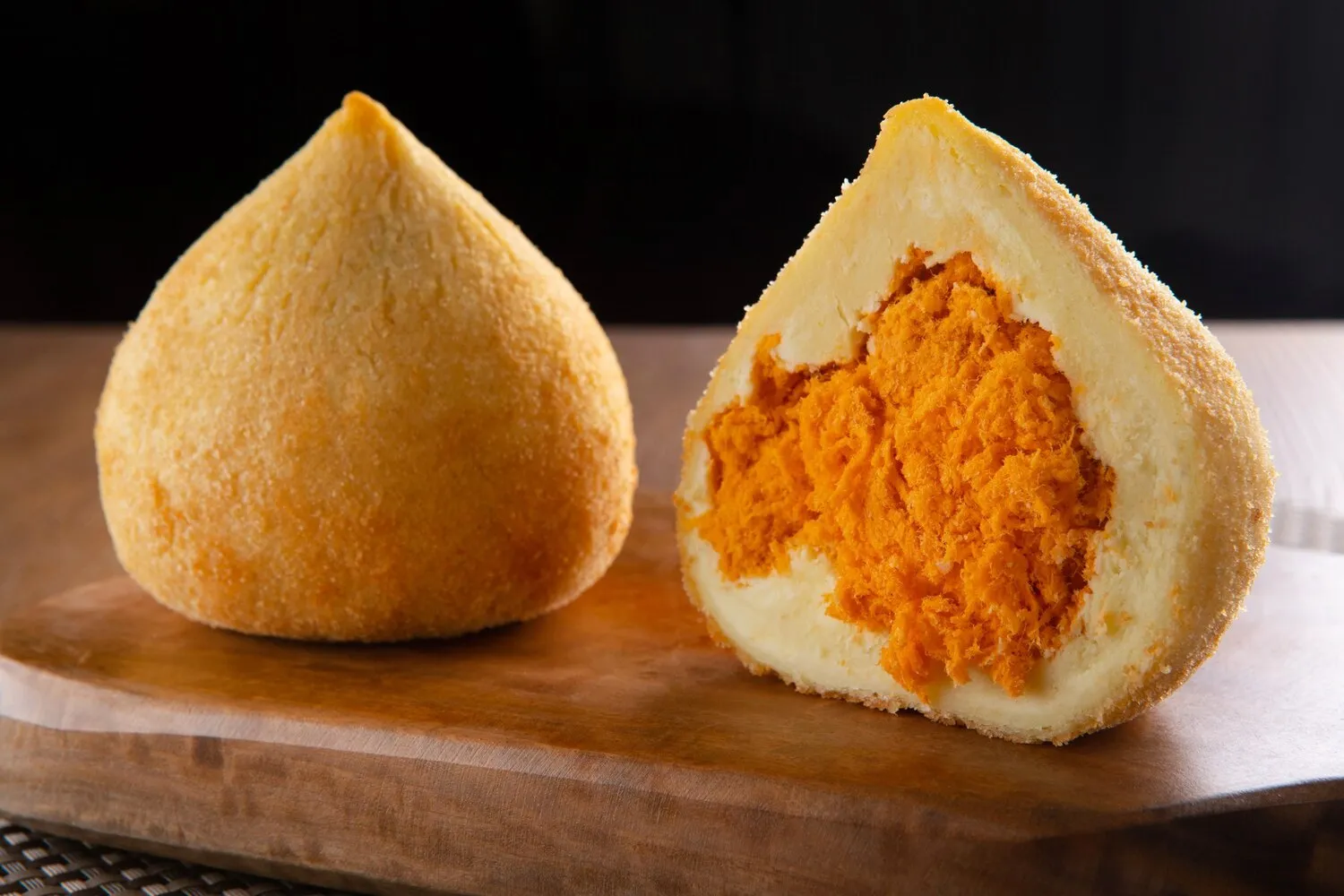
Pastel
A deep-fried turnover with various fillings, such as cheese, meat, or pizza.
Nutrition Facts
* The % Daily Value (DV) tells you how much a nutrient in a serving of food contributes to a daily diet. 2,000 calories a day is used for general nutrition advice.
Gênesis Panificadora e Confeitaria
The Pastel's origins are believed to trace back to Chinese egg rolls brought to Brazil by Japanese immigrants during World War II. Facing discrimination and seeking entrepreneurial opportunities, they adapted the recipe to local tastes and ingredients, selling them in street markets as a 'Brazilian' snack, disguising their Japanese origins.
Pastels hold a significant place in Brazilian street food culture and are commonly enjoyed at fairs, markets, and 'pastelarias' (pastel shops). They represent an accessible and affordable treat for people from all walks of life.
Feiras and Markets
Pastels are a staple at Brazilian feiras (street markets), where they are often sold alongside other popular snacks like caldo de cana (sugar cane juice). Eating a pastel while browsing the market stalls is a quintessential Brazilian experience.
Pastelarias
Dedicated pastelarias offer a wide variety of pastel fillings and are a popular spot for a quick and satisfying meal. Some pastelarias have been around for generations, preserving traditional recipes and techniques.
Social Gathering
Pastels are frequently served at informal gatherings and parties. Their versatility and ease of consumption make them a crowd-pleasing option for any occasion.
Pastels are known for their savory and diverse fillings encased in a crispy, deep-fried dough. The combination of the crunchy exterior with the flavorful interior is a key aspect of its appeal.
The dough is typically made with wheat flour, water, and sometimes cachaça or vinegar for added crispness. Fillings can range from traditional ground beef, cheese (especially mozzarella or catupiry), and shredded chicken to more creative options like hearts of palm, shrimp, or even pizza-style fillings with tomato sauce, cheese, and oregano. The deep-frying process ensures a golden-brown and incredibly crispy crust, contrasting with the soft and often juicy filling.
Dough Consistency
The dough should be thin and elastic enough to be easily rolled out but not too thin that it tears during frying. Adding a small amount of cachaça or vinegar can help create a flakier crust.
Filling Moisture
Avoid fillings that are too wet, as this can make the pastel soggy. Drain excess liquid from ingredients like ground beef or vegetables before filling the dough.
Frying Temperature
Maintain a consistent oil temperature (around 350-375°F or 175-190°C) for optimal frying. Too low and the pastel will absorb too much oil; too high and it will burn before the filling is heated through.
Serving
Serve pastels immediately after frying for the best taste and texture. They are often accompanied by hot sauce or a vinegar-based condiment for added flavor.
Explore additional Salty snacks dishes and restaurants
Explore Salty snacksDiscover top dining spots and culinary experiences in Sao Joao Batista.
Explore Sao Joao BatistaLearn more about the food culture, restaurant scene, and culinary heritage of Brazil.
Explore Brazil
